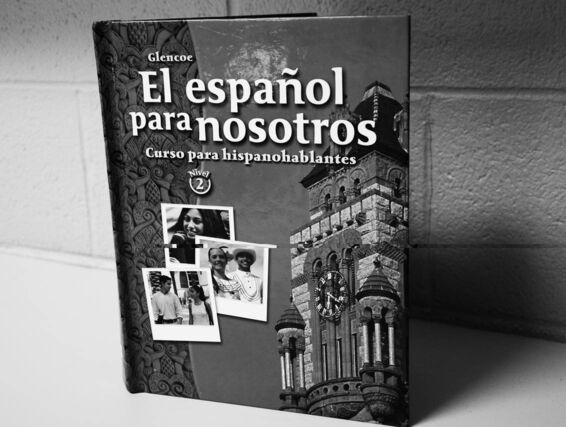New Spanish for Spanish Speakers curriculum implemented
Class will now emphasize fundamental skills to fit the changing population of Spanish speakers
MCPS Spanish for Spanish Speakers (SSS) curriculum has undergone changes that have been implemented this year in eleven high schools and eight middle schools that offer the course, according to Judith Klimpl, supervisor of MCPS Department of Foreign Languages. The course was revised in order to enhance the Spanish of the shifting population of students, according to Klimpl.
Some parts of the curriculum were used last year at Blair and Earle B. Wood Middle School, said SSS teacher Dora González, who was one of the teachers that began improving the curriculum three summers ago. The new curriculums for SSS 1 and SSS 2 are being piloted and have been fully implemented while the curriculum for SSS 3, the last level in the course, is still being revised.According to González, the class was originally designed for native Spanish speakers who immigrated to the U.S. However, in Montgomery County there has been a rise in "heritage learners," Spanish speakers who are born in the U.S. and have learned Spanish from family members.
Because the course was initially created for native speakers, it tried to build on the students' existing knowledge of Spanish and did not teach basic language skills, González said. "We assumed that the students knew how to read, write and speak Spanish and that we had to enrich the knowledge of the language," she said. The new curriculum includes instruction of skills such as reading and writing in order to ensure that heritage learners grasp the fundamental skills of the language. The new curriculum also stresses content such as geography and culture in order to help the students make connections to the language, said González . The new MCPS curriculum also has a required textbook, for the first time, which provides additional guidance for teachers, Klimpl said. According to González , the textbook, called "iEl español para nosotros," comes with teaching materials such as videos and Promethean board activities that make the class more interactive. Audio CDs are also included to improve students' pronunciation and listening skills.
Blake SSS teacher Denise Ramos-Román, another teacher who helped revise the curriculum, said that even though she has used other textbooks in the past to teach the course, the textbooks she used were not the basis of the curriculum, were not required and were not used by all county teachers.
Instead of giving the teachers vague themes such as heritage or identity, the new curriculum will have more specific focus points, such as social changes in the family and ethnic groups. The new revisions provide teachers with a clear and consistent guide to teaching the course, González said. In addition to the curriculum changes, the SSS course sequence now uses a placement test that determines the level of a student's Spanish knowledge and consequently places him/her in the appropriate level of the course.
González is pleased with the new curriculum and believes that it has fulfilled its goals of making sure that students are equipped with fundamental skills. She said that the new curriculum helps the students and allows them to learn the language with a lot more ease since it is aimed at teaching the shifting population. González has seen that more of her students are completing their homework and are more focused on the teachings. "Since it addresses the needs of the majority of the students, they are more comfortable and enthusiastic about what they are studying, González said.
Last year, when the curriculum was partially implemented, González allowed her SSS 2 students to give input by asking them if the new curriculum was better. González said the students like the pace of the new curriculum. Since the curriculum has more specific content instead of big major themes, teachings are given in short bursts and not spread out over a long period of time.
Editor's note: Dora González is the Spanish Page Adviser.
Advanced Spanish
According to González, one of the primary goals of the new SSS curriculum is to ensure that all students are equipped with the right skills to take the Advanced Placement (AP) Spanish Language and Spanish Literature courses and exams.
The old curriculum had the same goals but González said the new curriculum puts an emphasis on the needs of the shifting population of students, and the students will be more prepared to take the AP course and more comfortable with it as well.
The students in AP courses include two groups of students. Those with a Spanish speaking background and have taken three years of SSS, and those who have taken the normal Spanish courses for five years.
Tags: print
Biruk Bekele. More »
Comments
No comments.
Please ensure that all comments are mature and responsible; they will go through moderation.
